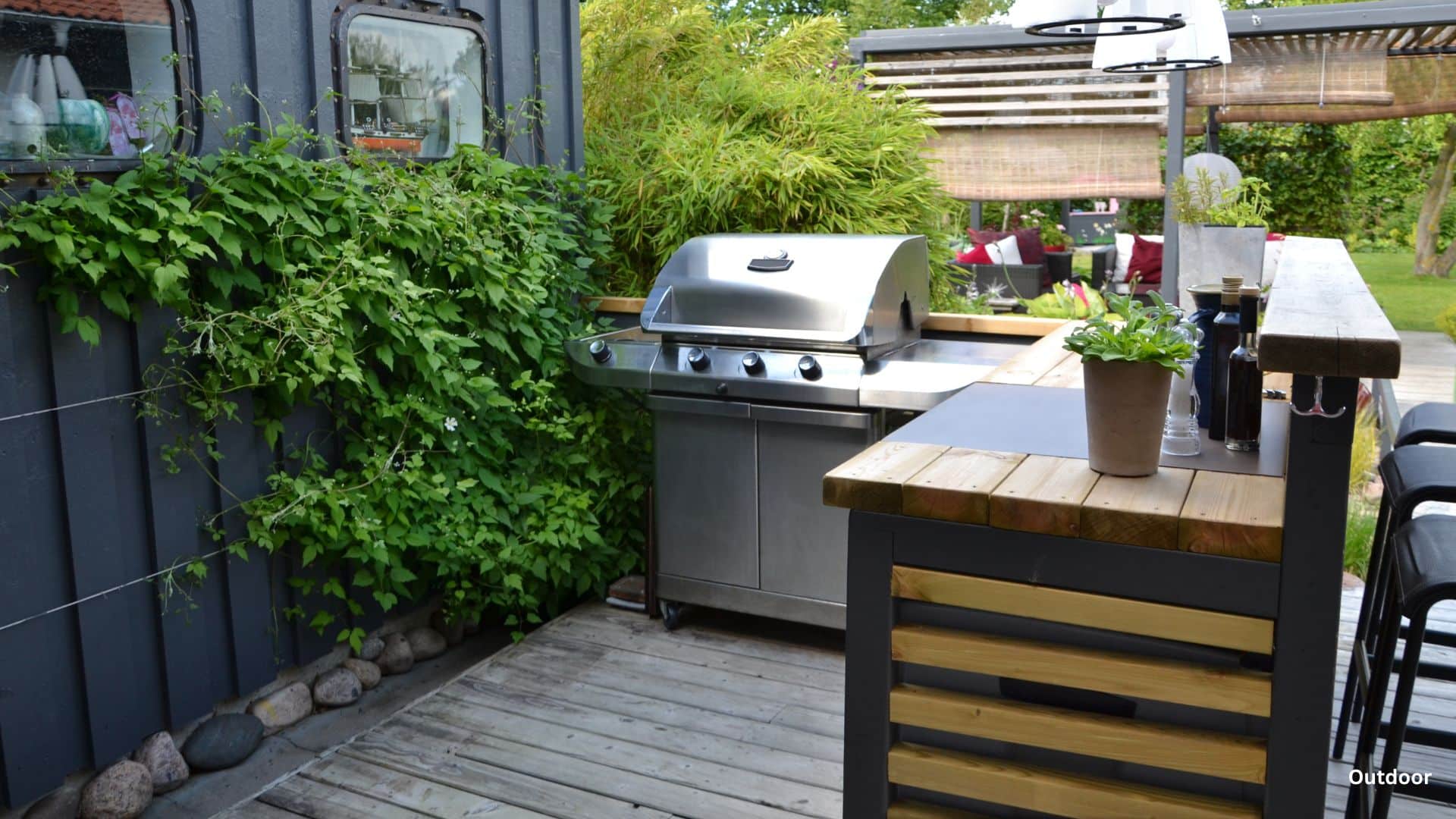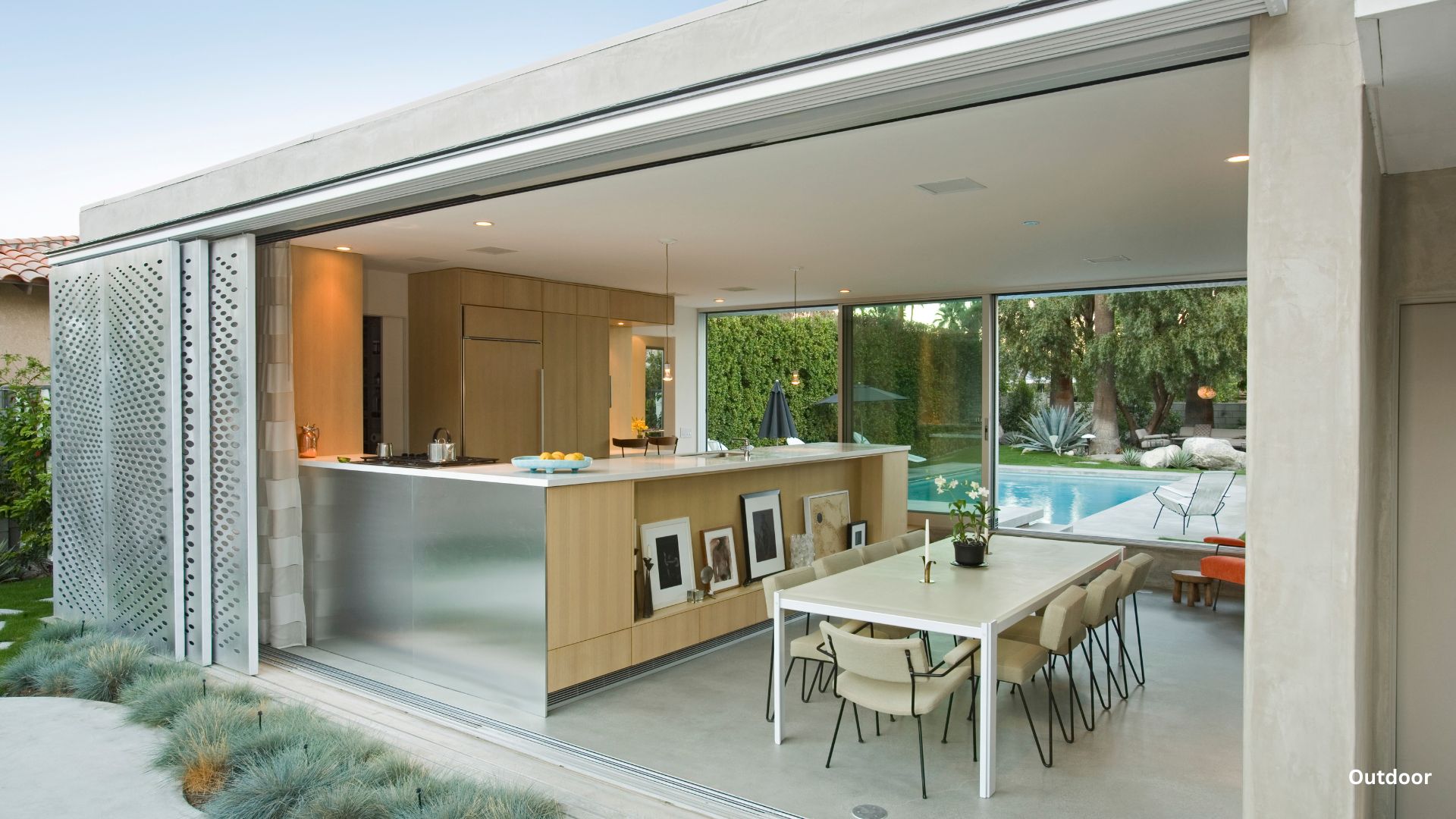Creating an outdoor kitchen is an exciting way to enhance your outdoor living experience. This guide will cover everything you need to know about designing, building, and enjoying your outdoor kitchen.
Outdoor Kitchen Ideas







Why Choose an Outdoor Kitchen?
Choosing an outdoor kitchen transforms your deck, patio, or backyard into a vibrant hub for social gatherings and culinary adventures. It allows you to cook and entertain guests in a fresh, open-air environment, enhancing the overall convenience and enjoyment of meal preparation and serving. This addition significantly boosts your property’s appeal and market value, offering a unique selling point for prospective buyers. An outdoor kitchen provides a unique culinary experience, enabling you to explore different cooking methods like grilling and smoking, while also enhancing the aesthetic appeal of your outdoor space with customizable design options. By investing in an outdoor kitchen, you create a versatile and inviting area for everyday living and special occasions.
Planning Your Outdoor Kitchen
Location and Layout
-
- Choose a convenient spot close to your indoor kitchen.
- Ensure the layout complements your outdoor living space.
- Consider proximity to utilities like gas, water, and electricity.
Essential Features
-
- Grill: The centerpiece of any outdoor kitchen.
- Counter Space: For food prep and serving.
- Storage: Cabinets and drawers to store utensils and supplies.
Additional Amenities
-
- Refrigerator: Keep ingredients and drinks cold.
- Sink: For easy cleanup.
- Seating Area: Comfortable seating for guests.
Materials and Durability for Outdoor Kitchens
Selecting durable materials is crucial for your outdoor kitchen to withstand various weather conditions and provide long-lasting functionality. Here are some top choices:
1. Appliances
- Stainless Steel
- Advantages: Resistant to rust and corrosion, easy to clean, and offers a sleek, modern look.
- Uses: Grills, refrigerators, sinks, and cabinetry.
- Maintenance: Regular cleaning with mild soap and water to maintain shine and prevent staining.
2. Countertops
- Granite
- Advantages: Highly durable, heat-resistant, and available in a wide range of colors and patterns.
- Uses: Countertops and prep areas.
- Maintenance: Seal periodically to prevent stains and scratches.
- Concrete
- Advantages: Customizable in shape and color, extremely durable, and heat-resistant.
- Uses: Countertops, flooring, and custom features.
- Maintenance: Seal to protect from stains and weathering.
- Tile
- Advantages: Versatile in design, easy to clean, and heat-resistant.
- Uses: Countertops, backsplashes, and flooring.
- Maintenance: Ensure grout is sealed to prevent moisture penetration.
3. Cabinetry
- Stainless Steel
- Advantages: Weather-resistant, durable, and easy to maintain.
- Uses: Storage cabinets and appliance housings.
- Maintenance: Clean regularly to avoid rust spots and maintain appearance.
- Teak Wood
- Advantages: Naturally resistant to moisture, insects, and decay.
- Uses: Cabinetry and outdoor furniture.
- Maintenance: Oil periodically to maintain color and prevent drying out.
4. Flooring
- Natural Stone (e.g., Travertine, Slate)
- Advantages: Durable, slip-resistant, and aesthetically pleasing.
- Uses: Flooring and decorative accents.
- Maintenance: Seal to protect from stains and weather effects.
- Concrete Pavers
- Advantages: Durable, customizable, and easy to install.
- Uses: Flooring, pathways, and patios.
- Maintenance: Seal and clean regularly to prevent staining and moss growth.
5. Backsplashes and Decorative Elements
- Ceramic Tile
- Advantages: Variety of colors and designs, easy to clean.
- Uses: Backsplashes and decorative accents.
- Maintenance: Regular cleaning and sealing grout to prevent mold.
- Glass Tile
- Advantages: Modern appearance, reflective properties enhance light.
- Uses: Backsplashes and decorative features.
- Maintenance: Easy to clean, but ensure proper installation to avoid cracking.
6. Additional Elements
- Pergolas and Gazebos
- Materials: Wood (Cedar, Teak), Metal (Aluminum, Steel).
- Advantages: Provides shade and protection, enhancing the usability of the outdoor kitchen.
- Maintenance: Wood structures need sealing and staining; metal structures require occasional rust prevention treatment.

Budgeting for Your Outdoor Kitchen
An outdoor kitchen can range from budget-friendly to luxurious. Here’s a cost breakdown to help you plan:
- Ready-to-Assemble Kits: $1,000 – $5,000. These kits include basic components and are easy to assemble.
- Basic Appliances: $500 – $2,500. Opt for essential appliances like a grill, mini fridge, and basic sink.
- DIY Options: $500 – $3,000. Consider building countertops, cabinets, and seating yourself to save on labor costs.
Pros and Cons of an Outdoor Kitchen
Pros
- Entertainment: Perfect for hosting barbecues and parties.
- Home Value: Increases your property’s appeal and value.
- Convenience: Simplifies cooking and entertaining outdoors.
- Social Interaction: Encourages socializing in a relaxed, open-air environment.
- Aesthetic Appeal: Enhances the overall look and functionality of your outdoor space.
Cons
- Cost: High initial investment for quality materials and appliances.
- Maintenance: Regular upkeep required due to exposure to the elements.
- Weather Dependency: Limited usage during extreme weather conditions.
- Space Requirements: Requires adequate outdoor space, which may not be available in smaller yards.
- Utilities Installation: Complex and potentially costly installation of gas, water, and electrical lines.
Maintenance Tips for Your Outdoor Kitchen
Regular maintenance is essential to keep your outdoor kitchen in top condition, ensuring it remains functional and attractive for years. Here are some detailed maintenance tips:
1. Grill Maintenance
- Regular Cleaning
- After Each Use: Clean the grill grates with a wire brush to remove food particles and grease. For tougher residue, use a grill cleaner or soapy water.
- Deep Cleaning: Once a month, dismantle removable parts such as grates, flavorizer bars, and burner tubes. Soak them in warm, soapy water, scrub, and rinse thoroughly.
- Inspecting Burners: Regularly check the burners for blockages or corrosion. Clean any clogged ports with a paperclip or brush and replace damaged burners.
- Checking Gas Connections: Inspect gas lines and connections for leaks using a soap and water solution. Bubbles indicate a leak that needs fixing.
2. Countertops and Surfaces
- Daily Cleaning: Wipe down countertops with a mild soap and water solution after each use. Avoid abrasive cleaners that can damage the surface.
- Stain Prevention: Quickly clean up spills, especially acidic substances like lemon juice, wine, or vinegar, to prevent staining and etching.
- Sealing: Stone and concrete countertops should be sealed annually to maintain their durability and resistance to stains.
3. Appliances
- Covering Appliances: When not in use, cover appliances like grills, refrigerators, and sinks with waterproof covers to protect them from rain, dust, and UV rays.
- Regular Inspections: Check for rust, corrosion, or any signs of wear and tear. Clean stainless steel appliances with a stainless steel cleaner to maintain their finish.
- Refrigerators: Clean the condenser coils periodically to ensure efficient cooling. Defrost the freezer section if ice build-up occurs.
4. Cabinetry and Storage
- Stainless Steel Cabinets: Clean with a damp cloth and a stainless steel cleaner. Avoid using abrasive pads that can scratch the surface.
- Wood Cabinets: Oil or seal wooden cabinets periodically to protect against moisture and UV damage. Clean spills immediately to prevent stains.
5. Furniture
- Regular Cleaning: Wipe down tables, chairs, and other furniture with a damp cloth. Use mild soap for more thorough cleaning.
- Covering and Storage: Cover furniture when not in use or store it in a sheltered area during extreme weather conditions to prolong its lifespan.
6. Flooring and Decking
- Sweeping and Washing: Sweep the floor regularly to remove dirt and debris. Use a pressure washer or garden hose with a mild detergent to clean thoroughly.
- Sealing: Stone and concrete floors should be sealed every few years to protect against moisture and staining.
7. Seasonal Maintenance
- Winterizing: In colder climates, winterize your outdoor kitchen by draining and disconnecting water lines, covering appliances, and storing furniture indoors if possible.
- Spring Cleaning: At the start of the outdoor cooking season, conduct a thorough inspection and cleaning of all components to ensure everything is in good working order.
8. Pest Control
- Preventing Infestations: Keep food covered and stored properly to prevent attracting pests. Clean up crumbs and spills immediately.
- Inspections: Regularly check for signs of pests such as ants, rodents, or insects. Use appropriate pest control measures if necessary.

FAQ Section
What is the cheapest way to build an outdoor kitchen?
The cheapest way to build an outdoor kitchen is by using ready-to-assemble kits and basic appliances. Consider DIY options and repurpose existing materials to cut costs.
Are outdoor kitchens a good idea?
Yes, outdoor kitchens are a good idea. They enhance your outdoor living experience, add value to your home, and provide a unique space for entertaining.
What is the best structure for an outdoor kitchen?
The best structure for an outdoor kitchen includes a sturdy countertop, weather-resistant appliances, and ample storage. Stainless steel and stone are ideal materials for durability.
What are the disadvantages of outdoor kitchens?
The disadvantages of outdoor kitchens include exposure to weather, which can lead to wear and tear. They also require regular maintenance and cleaning to keep them in good condition.
What to consider when building an outdoor kitchen?
When building an outdoor kitchen, consider location, materials, budget, and the types of appliances you need. Ensure it complements your outdoor living space and meets your cooking and entertaining needs.